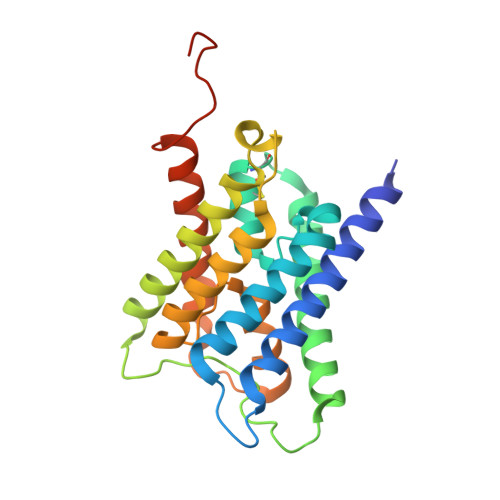On-chip crystallization for serial crystallography experiments and on-chip ligand-binding studies.
Lieske, J., Cerv, M., Kreida, S., Komadina, D., Fischer, J., Barthelmess, M., Fischer, P., Pakendorf, T., Yefanov, O., Mariani, V., Seine, T., Ross, B.H., Crosas, E., Lorbeer, O., Burkhardt, A., Lane, T.J., Guenther, S., Bergtholdt, J., Schoen, S., Tornroth-Horsefield, S., Chapman, H.N., Meents, A.(2019) IUCrJ 6: 714-728
- PubMed: 31316815
- DOI: https://doi.org/10.1107/S2052252519007395
- Primary Citation of Related Structures:
6QF1, 6QF2, 6QF3, 6QF4, 6QF5 - PubMed Abstract:
Efficient and reliable sample delivery has remained one of the bottlenecks for serial crystallography experiments. Compared with other methods, fixed-target sample delivery offers the advantage of significantly reduced sample consumption and shorter data collection times owing to higher hit rates. Here, a new method of on-chip crystallization is reported which allows the efficient and reproducible growth of large numbers of protein crystals directly on micro-patterned silicon chips for in-situ serial crystallography experiments. Crystals are grown by sitting-drop vapor diffusion and previously established crystallization conditions can be directly applied. By reducing the number of crystal-handling steps, the method is particularly well suited for sensitive crystal systems. Excessive mother liquor can be efficiently removed from the crystals by blotting, and no sealing of the fixed-target sample holders is required to prevent the crystals from dehydrating. As a consequence, 'naked' crystals are obtained on the chip, resulting in very low background scattering levels and making the crystals highly accessible for external manipulation such as the application of ligand solutions. Serial diffraction experiments carried out at cryogenic temperatures at a synchrotron and at room temperature at an X-ray free-electron laser yielded high-quality X-ray structures of the human membrane protein aquaporin 2 and two new ligand-bound structures of thermolysin and the human kinase DRAK2. The results highlight the applicability of the method for future high-throughput on-chip screening of pharmaceutical compounds.
Organizational Affiliation:
Center for Free-Electron Laser Science, Deutsches Elektronen-Synchrotron DESY, Notkestrasse 85, 22607 Hamburg, Germany.















